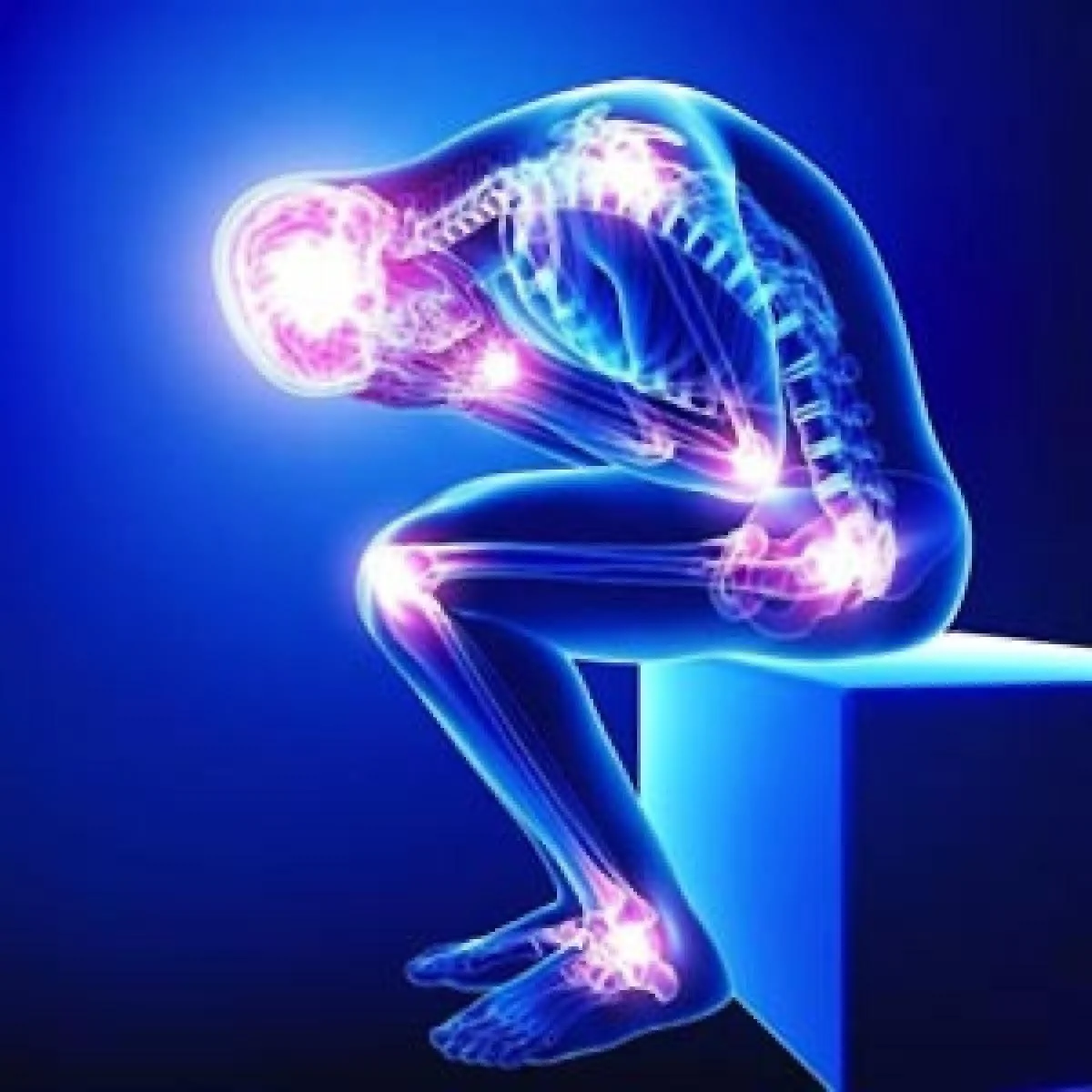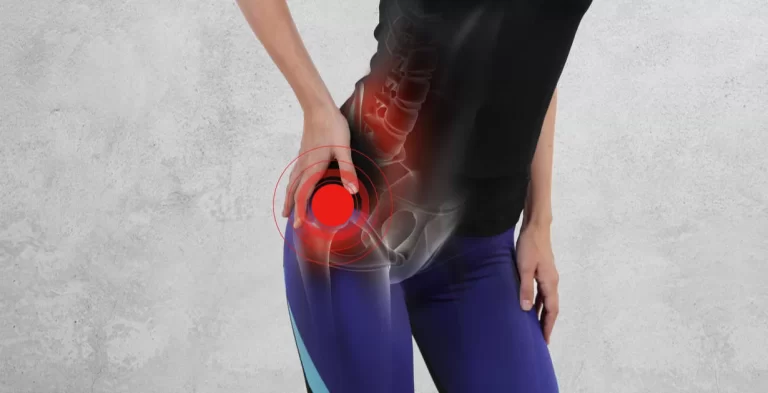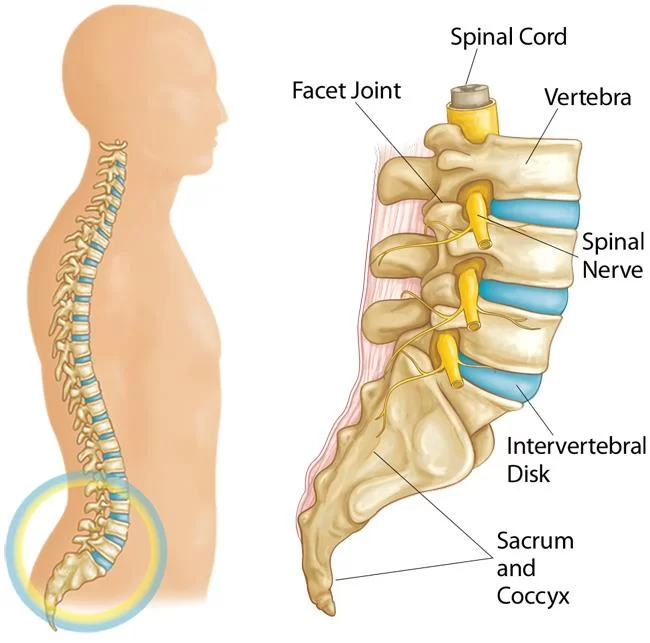Bone pain
What is Bone pain?
Bone pain is any pain or discomfort you sense in your bones or joints. It may occurs due to any injuries and/or health diseases. You might see it guided to bone tenderness. Some reasons for bone pain will be easier to feel or notice than others.
If you have a bone fracture after trauma, such as a car accident or fall, you’ll know precisely why your bone breaks. But most reasons for bone pain aren’t noticeable. For instance, some kinds of cancer that begin in (or spread to) your bones generate bone pain. Traumas and damage can also generate bone pain.
Visit a healthcare provider or doctor as soon as you see bone pain. It’s essential to obtain the cause of the pain analyzed as soon as possible. No point in what’s causing it, don’t forget new pain in your bones, particularly if it’s getting more harmful or doesn’t go out in a few days.
What causes bone pain?
Many situations and events can lead to bone pain.
Injury
Injury is a familiar reason for bone pain. Generally, this pain occurs when a person goes through some form of trauma, like a car accident or fall. The effect may break or fracture the bone. Any injury to the bone can induce bone pain.
Mineral deficiency
To remain strong, your bones need a combination of minerals and vitamins, involving calcium and vitamin D. A lack of calcium and vitamin D frequently leads to osteoporosis, the most familiar kind of bone disease. Patients in the late phases of osteoporosis frequently have bone pain.
Metastatic cancer
This is cancer that began somewhere else in the body but extended to further body parts. Cancers of the lung, breast, kidney, thyroid, and prostate are among the cancers that are typically distributed to the bones.
Bone cancer
Bone cancer represents cancer cells that create in the bone itself. Bone cancer is considerably rarer than metastatic bone cancer. It can generate bone pain when cancer disrupts or eliminates the bone’s normal form.
Diseases that disturb blood supply to bones
Some conditions, like sickle cell anemia, interfere with the blood supply to the bone. Without a continuous source of blood, bone tissue starts to die. This generates considerable bone pain and weakens the bone.
Infection
If an infection creates in or extends to the bones, it can cause a severe disease called osteomyelitis. This infection of the bone can destroy bone cells and generate bone pain.
Leukemia
Leukemia is a cancer of the bone marrow. Bone marrow is located in most bones and is liable for the production of bone cells. Patients with leukemia frequently experience bone pain, particularly in the legs.
Bone pain in pregnancy
For many pregnant females, a pelvic discomfort is a regular event. Pregnancy-related pelvic girdle pain is another term for this situation (PPGP). An ache in the pubic bone, as well as immobility and pain in the pelvic joints or junctions, are familiar symptoms.
PPGP generally doesn’t go out till after the baby is born. Early therapy, on the further hand, can assist to alleviate symptoms. Among the therapy choices available are:
- Manual treatment is used to assist the joints or junctions move correctly.
- Water exercises for physical treatment habits to strengthen the pelvic floor
- If the expecting female is experiencing pelvic aches, she should seek immediate maintenance from the doctor or physician.
Symptoms of bone pain
Further signs and symptoms differ depending on the source of the bone pain.
After an injury, there may be swelling, a snap or grinding noise, noticeable cracks or deformities,
Mineral deficiency- Muscle and tissue pain, cramping, sleep problems, exhaustion, and weakness are all symptoms of this disease.
Disrupted blood supply to the bones- Joint or junction pain, weakness, loss of joint or junction function
Infection- Redness, streaks from the infection area, fever, warmth at the infection area, swelling, nausea, decreased range of movement, and loss of appetite
Osteoporosis- Backache, loss of height over time, stooped posture
Bone cancer- Numbness or tingling sensation, a lump or bulge under the skin (from when a tumor pinch on a nerve), bone breakage,
Leukemia- Fatigue, shortness of breath, pale skin, nocturnal sweats, and weight loss that isn’t solvable.
Metastatic cancer- Symptoms may involve chest pain, headaches, seizures, bone fractures, disorientation, shortness of breath, jaundice, and abdominal swelling, relying on where cancer has progressed.
Who is more likely to experience joint pain?
Joint or junction pain tends to impact those who:
- Have had prior injuries to a joint
- Often use and/or overuse a muscle
- Have arthritis or further chronic medical diseases
- Suffer from anxiety, depression, and/or stress
- Are overweight
- Suffer from poor fitness
- Age is also an element in stiff and painful joints or junctions. After years of use, and wear and tear on joints or junctions, issues may occur in middle-aged or older grown-ups.
How is bone pain diagnosed?
Physical examination
A doctor or physician requires to recognize the pains underlying cause to suggest therapy. Managing the underlying cause can drastically decrease or stop your pain.
Your doctor or physician will conduct a physical examination and ask about your medical record. Common questions contain:
- Where is the pain found?
- When did you first feel the pain?
- Is the pain bringing more harmful?
- Are there any further symptoms that accompany the bone pain?
Your doctor or physician may order blood tests to examine for vitamin deficiencies or cancer markers. Blood tests may also assist your doctor or physician see infections and adrenal gland diseases that can interfere with bone health.
During the physical examination, your healthcare provider or doctor will check and press on (palpate) the area of your pain to evaluate for swelling, tenderness, discoloration, masses/lumps, warmth, and deformity.
Your healthcare provider or doctor will also look at surrounding muscles and joints or junctions and assess your capability to bear weight and move the involved bone.
Lab test
Bone X-rays, MRIs, and CT scans can assist your doctor or physician assess the involved site for bone lesions, injuries, and tumors within the bone.
Urine analyses can be used to see abnormalities within the bone marrow, involving multiple myeloma.
In some circumstances, your doctor or physician will require to run multiple examinations to rule out certain diseases and to diagnose the exact reason for your bone pain.
How is bone pain treated?
The doctor or physician will require to figure out what is generating the bone pain before determining a proper therapy. Some kinds of bone pain will go out following treatment; yet, others may be chronic and need long-term management.
Fractures, for instance, may need the use of a cast or splint. Rest, ice, immobilization, and elevation are the most familiar therapies for stress fractures.
To assist avoid fractures, the doctor or physician can manage osteoporosis-related bone pain with a variety of bone-building and pain-relieving drugs, as well as lifestyle adjustments and fall prevention. Over-the-counter pain drugs, involving aspirin, acetaminophen, and ibuprofen, may deliver short-term ease from bone discomfort.
If the person has a bone infection, the doctor or physician may specify antibiotics to kill the illness-causing bacteria.
Cancer-related pain will be managed by choices based on the phase of cancer and the site of the malignancy.
Depending on how intense the bone pain is induced by sickle cell conditions, it can be managed with a range of medications.
Physical treatment and pelvic floor strengthening activities can aid with PPGP, which usually doesn’t go out until after the baby is born.
The person may require surgery to release infected bone fragments. Broken bones may require to be re-set, and cancer-related tumors may need surgery. In extreme cases where joints or junctions can be substituted or swapped, reconstructive surgery may be used.
If the person has any form of primary bone pain, however of what they think the source is, they should confer a physician or doctor.
Physiotherapy treatment
Like a muscle, bone is living tissue that reacts to exercise by evolving stronger. Young females and males who exercise daily commonly reach greater peak bone mass (full bone density and strength) than those who do not. For most patients, bone mass rises during the third decade of life. After that moment, we can start to lose bone.
Females and males older than age 20 can assist to control bone loss with regular activity. Exercising can also assist us in keeping coordination, muscle strength, and balance, which in turn assists to stop falls and related fractures. This is particularly necessary for older grown-ups and patients who have been analyzed with osteoporosis.
The best bone-building exercises
Weight-bearing and resistance activities are the most suitable for your bones. Weight-bearing activities force you to work opposite to gravity. They contain hiking, walking, climbing stairs, jogging, playing tennis, and dancing. Resistance activities like raising weights can also strengthen bones. Other activities like swimming and bicycling can assist to build and support strong muscles and have excellent cardiovascular help, but they are not the best way to activate your bones.
Exercise tips
If you have health disorders like high blood pressure, heart problem, diabetes, or obesity, or if you are age 40 or more senior, inspect with your doctor or physician before you start a routine exercise schedule.
According to the Surgeon General or doctor, the optimal plan is at least 30 minutes of physical exercise on most days, preferably every day.
Listen to your body. When beginning an activity way, you may have some muscle soreness and pain at the start, but this should not be aching or last more than 48 hours. If it does, you may be performing too hard and required to ease up. Stop the activity if you have any chest ache or discomfort, and see your doctor or physician before your next training session.
If you have osteoporosis, ask your doctor or physician which exercises are secure for you. If you have low bone mass, experts suggest that you save your spine by avoiding activities or activities that bend, flex, or twist it. Also, you should avoid high-impact activity to lower the risk of damaging a bone. You also might want to confer with an activity professional to learn the correct progression of exercise, how to lengthen and strengthen muscles safely, and how to fix poor posture routines. An exercise professional should have a degree in activity physiology, physical therapy, physical education, or a similar specialty. Be certain to ask if he or she is aware of the special requirements of a person with osteoporosis.
Surgery
Surgery may be a choice if the joint or junction pain is long-lasting and does not diminish with medications or physical therapy and activity. Please be certain to discuss this with the doctor or physician to make sure that an operation makes feel.
There are many further surgical choices available, including:
Arthroscopy: A technique where a surgeon creates two or three small incisions in the meat over the joint or junction and reaches into the joint or junctions using an arthroscope, or a flexible, thin, fiberoptic device, to correct cartilage or withdraw bone chips in or near the joint or junction.
Joint replacement: If other therapies do not assist, surgery may be required to replace the joint or junction once the cartilage that pillows and saves the ends of the bones slowly wears away. This can be done for knee, hip, and shoulder joints or junctions.
A surgeon extracts parts of the person’s bone and plants an artificial joint or junction constructed from metal or plastic. This method has had excellent outcomes and the prevalence of people feeling long-lasting pain ease after this kind of surgery.
Recovery from bone pain
Bone pain brings time to heal. Avoid annoying or straining the involved sites during recuperation. This can assist to control further damage and discomfort while also permitting the body to recuperate. Rest and immobilize the damaged regions as much as possible.
Braces, splints, and casts can deliver the support that covers the bone while also easing pain.
Complications Of Bone Pain Include:
Spinal cord compression –
Each vertebra is hooked by ligaments, which create the vertebral column.
Injury to one or more of these bones may injure the spinal cord, and induce severe nerve injury as an outcome. This is known as spinal cord compression.
If you feel a loss of sensation, or severe pain, or are suddenly incapable to walk, Inform your doctor or physician instantly
Hypercalcemia – is called an elevated blood calcium level. When the level of calcium in the blood is too elevated, certain issues may happen. Symptoms of hypercalcemia may contain:
- Periodic urination
- Inadequate appetite
- Nausea and vomiting
- Constipation
- Extreme weakness and fatigue
- Muscle twitching
- Confusion, or behavior changes
If you see these symptoms, inform your healthcare provider or doctor instantly.
How can bone pain be prevented?
Supporting strong, fit bones makes it more comfortable to avoid bone pain. To support optimal bone fitness, recall to:
- keep a healthy activity program
- get sufficient calcium and vitamin D
- consume only in moderation
- avoid smoking
FAQ
When should I worry about bone pain?
Even mild bone aches may suggest an emergency time. If you feel unexplained bone pain that doesn’t enhance within a few days, confer with your doctor or physician. You should also see a doctor or physician if the bone pain is accompanied by reduced appetite, weight loss, or general fatigue.
What deficiency causes bone pain?
When vitamin D levels are down and the body isn’t capable of adequately soaking calcium and phosphorus, there is a risen risk of bone fractures, bone pain, muscle pain, and muscle weakness. In more senior adults, extreme vitamin D deficiency (levels shorter than 10 ng/mL) may also contribute to a raised risk of falls.
Can a lack of calcium cause bone pain?
You might also have flaky nails that split easily or look dry. Osteoporosis: Your bones require calcium to remain strong and healthy. Without sufficient calcium in your body, your bones weaken. This can induce pain and make them more reasonable to get breaks and fractures.
How long does bone pain last?
After around a week or two, the worst pain is generally over. What occurs next is that the fractured bone and the surrounding soft tissue start to recover. This brings a couple of weeks and the ache you might feel during this phase is known as subacute pain. The last phase of long duratiion pain is chronic bone pain.
How can I raise my calcium level quickly?
Dairy products, like milk, cheese, and yogurt. Fish with edible soft bones, like sardines and canned salmon. Dark green leafy vegetables, like broccoli and kale.Calcium-fortified foods and beverages, like soy products, cereal and fruit liquids, and milk replacements.








7 Comments